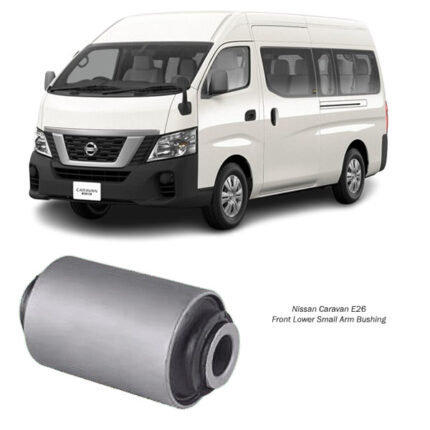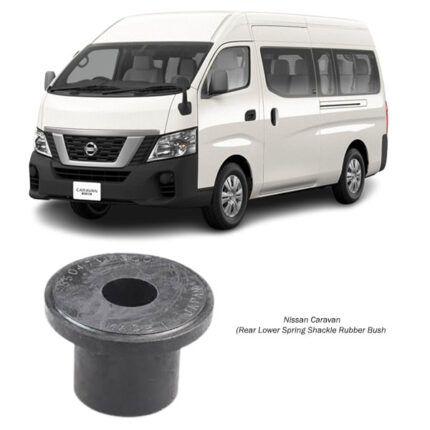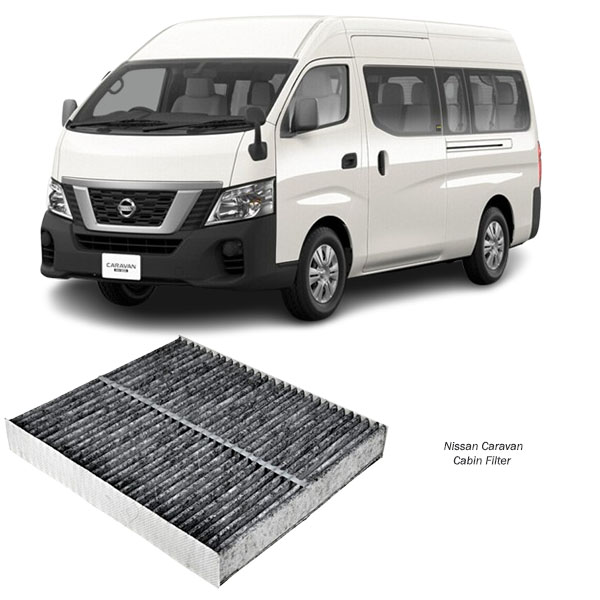-20%
Get Nissan Caravan E26 Cabin Filter (Air Con) 27277-1CA0A in Kenya
When it comes to vehicle maintenance, many parts are essential for ensuring smooth performance, but some are often overlooked. One such part is the Cabin Filter (Air Conditioning), which plays a vital role in providing a clean, comfortable environment inside your car. Whether you’re driving on a hot summer day or during the colder months with your heater on, the cabin filter helps regulate the air quality inside your vehicle. In this comprehensive guide, we’ll explore the function, importance, symptoms of wear, and replacement of the Cabin Filter (Air Con).
🔧 What is the Cabin Filter (Air Con)?
The Cabin Filter, also known as the Air Conditioning Filter or Cabin Air Filter, is a part of the vehicle’s HVAC (Heating, Ventilation, and Air Conditioning) system. Its main role is to filter out dust, dirt, pollen, and other harmful particles from the outside air before it enters the cabin. It helps keep the air inside the car clean and breathable while also protecting the vehicle’s air conditioning system from potential damage caused by debris and contaminants.
The filter is typically made from a layer of pleated paper or activated charcoal, which helps trap these particles as they pass through the filter. Over time, the filter can become clogged with dirt, allergens, and other debris, reducing its effectiveness and potentially causing issues with the air quality inside the cabin.
⚙️ How Does the Cabin Filter (Air Con) Work?
The Cabin Filter works by filtering the air that enters the vehicle through the HVAC system. Here’s how it operates in simple terms:
-
Air Intake: The air from the outside enters through the front grill or the air intake vents of the vehicle.
-
Filtration Process: As the air passes through the cabin filter, the pleated material or activated charcoal captures particles like dust, dirt, leaves, pollen, and even some bacteria or pollutants.
-
Air Circulation: The filtered air is then sent through the vehicle’s air conditioning or heating system and distributed into the cabin, ensuring that passengers breathe in clean air.
-
Humidity Control: In some cases, the cabin filter may also help with moisture control to prevent the build-up of mildew and mold within the HVAC system, which can lead to unpleasant odors.
🧩 Importance of the Cabin Filter (Air Con)
While the cabin filter may not seem as critical as other vehicle components, it plays a significant role in maintaining both the comfort and health of vehicle occupants. Here’s why the Cabin Filter is so important:
1. Improves Air Quality
The primary purpose of the cabin filter is to improve the air quality inside the vehicle. By trapping dust, pollen, smoke, and other airborne pollutants, the filter ensures that the air you breathe while driving is cleaner and healthier. This is especially important for individuals who suffer from allergies, asthma, or other respiratory conditions, as a clogged or dirty filter can exacerbate these issues.
2. Prevents Odors
A clean cabin filter helps prevent the buildup of unpleasant odors that can arise from dust, mold, or mildew inside the HVAC system. When the filter is clogged or dirty, moisture can accumulate in the air ducts, promoting the growth of mold and mildew, which can lead to musty or stale smells inside the cabin.
3. Protects the HVAC System
In addition to filtering the air entering the cabin, the cabin filter also helps protect the vehicle’s air conditioning and heating system from dirt and debris. A clogged filter can restrict airflow, making it harder for the HVAC system to function properly and potentially causing damage to the system over time.
4. Enhanced Comfort
A functioning cabin filter ensures that the air conditioning system can work at its best, keeping the cabin cool in hot weather and warm during colder months. When the filter is clogged, the air conditioning system may struggle to produce enough airflow, leading to reduced cooling and heating efficiency.
🛑 Signs of a Clogged or Worn-Out Cabin Filter
Over time, the cabin filter will accumulate dirt and debris, and eventually, it will need to be replaced. Here are some common signs that your cabin filter may be clogged or worn out:
1. Reduced Airflow
If you notice a decrease in airflow through the air conditioning or heating system, it could be a sign that the cabin filter is clogged. A dirty filter restricts airflow, making it harder for the system to push air into the cabin, leading to weaker or less effective airflow.
2. Unpleasant Odors
A musty, moldy, or stale odor from the air vents is often caused by a clogged cabin filter. When moisture and debris build up in the HVAC system, it can lead to the growth of mold and mildew, which produces unpleasant smells when the air conditioning or heating is turned on.
3. Increased Allergy Symptoms
If you or your passengers experience more allergy symptoms, such as sneezing, coughing, or itchy eyes, while driving, it could be due to a dirty cabin filter. The filter’s primary function is to capture allergens like pollen, and when it’s clogged, it may fail to trap these particles, causing them to circulate inside the cabin.
4. Unusual Sounds
If you hear strange noises coming from the air vents, such as a rattling or vibrating sound, it could indicate that the filter is clogged or loose. The airflow may be obstructed, causing the air conditioning system to work harder than usual and produce these sounds.
5. Foggy Windows
If the windows inside your vehicle become foggy more frequently, it could be a sign that the cabin filter is no longer functioning correctly. A clogged filter can affect the humidity control inside the cabin, leading to excess moisture on the windows.
🔧 How to Replace the Cabin Filter (Air Con)
Replacing the cabin filter is a relatively simple and inexpensive maintenance task that can be done at home with minimal tools. Here’s a general guide to replacing the cabin filter:
1. Locate the Cabin Filter
The location of the cabin filter depends on the make and model of your vehicle. Typically, the cabin filter is located behind the glove compartment, under the dashboard, or under the hood near the windshield. Check your vehicle’s manual for the exact location.
2. Remove the Old Filter
Once you’ve located the cabin filter, remove any panels or covers that may be blocking access. Carefully pull out the old filter, making sure not to let any debris fall into the air ducts.
3. Install the New Filter
Before installing the new cabin filter, ensure that it’s the correct size and shape for your vehicle. Insert the new filter into the compartment, ensuring that it fits snugly and securely. Pay attention to the airflow direction, which is usually marked on the filter.
4. Reassemble the Components
After installing the new filter, reassemble any panels or covers that were removed. Make sure everything is securely fastened and in place.
5. Test the Air Conditioning System
Turn on the air conditioning or heating system and check for improved airflow and any odors. The air should now flow freely, and any musty or stale smells should be gone.
🧰 Maintenance Tips for Cabin Filter Longevity
To ensure your cabin filter lasts as long as possible and continues to provide clean air, here are some maintenance tips:
✅ Replace the Filter Regularly
Most manufacturers recommend replacing the cabin filter every 12,000 to 15,000 miles, or once a year, whichever comes first. However, if you drive in areas with a lot of dust, pollen, or pollution, you may need to replace it more frequently.
✅ Check for Clogged Vents
Ensure that the vents and ducts in your vehicle are clean and free of debris. Regularly inspect the cabin filter and surrounding areas for any signs of blockage.
✅ Use High-Quality Filters
Investing in a high-quality cabin filter, such as one with activated charcoal, can improve air quality inside your vehicle and provide better protection against allergens, odors, and pollutants.
✅ Avoid Smoking Inside the Vehicle
Smoking inside the vehicle can lead to the accumulation of harmful particles and odors, which can clog the cabin filter more quickly. Avoid smoking inside your vehicle to extend the lifespan of the filter.
🧠 Final Thoughts
The Cabin Filter (Air Con) may be a small and often overlooked component, but it plays a critical role in maintaining air quality, comfort, and health inside your vehicle. By filtering out allergens, dust, dirt, and pollutants, it ensures that the air you breathe while driving is clean and safe. A clogged or dirty cabin filter can lead to poor air quality, reduced airflow, and unpleasant odors, so it’s important to replace it regularly to maintain optimal performance.
By keeping your cabin filter in top shape, you’ll not only improve the overall comfort of your driving experience but also protect your HVAC system from potential damage. Regular maintenance and replacement of the cabin filter will ensure that you enjoy clean, fresh air inside your vehicle for many miles to come.
Follow us on Facebook for more parts.




Reviews
Clear filtersThere are no reviews yet.